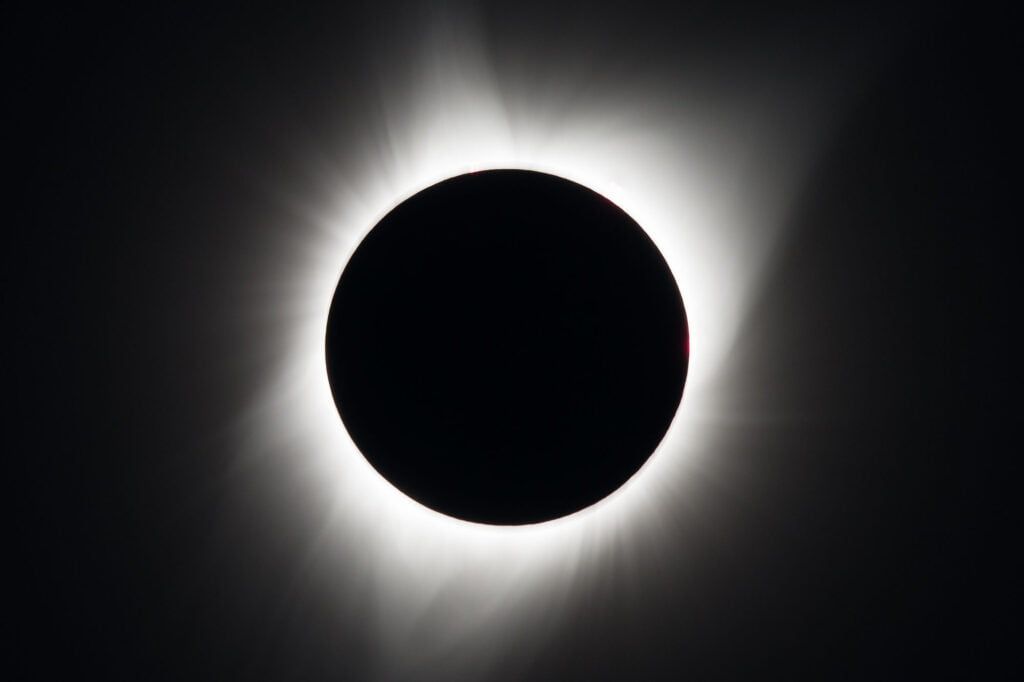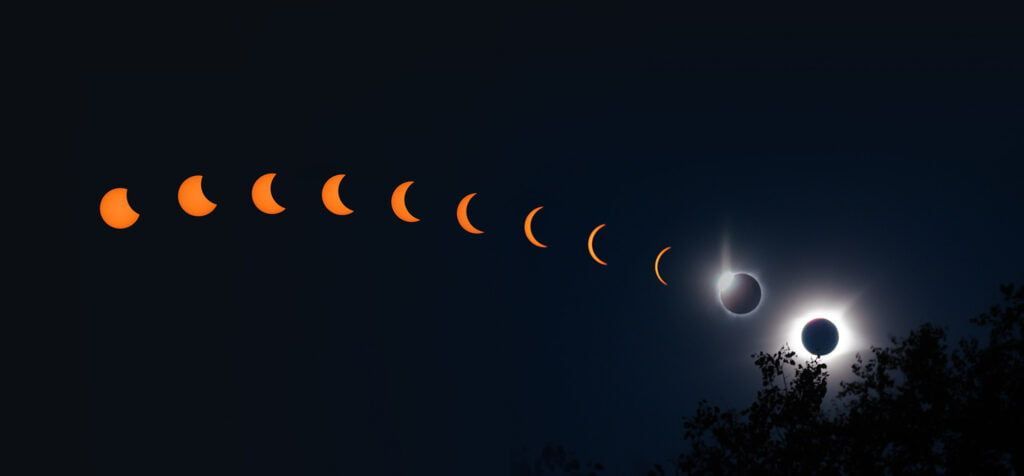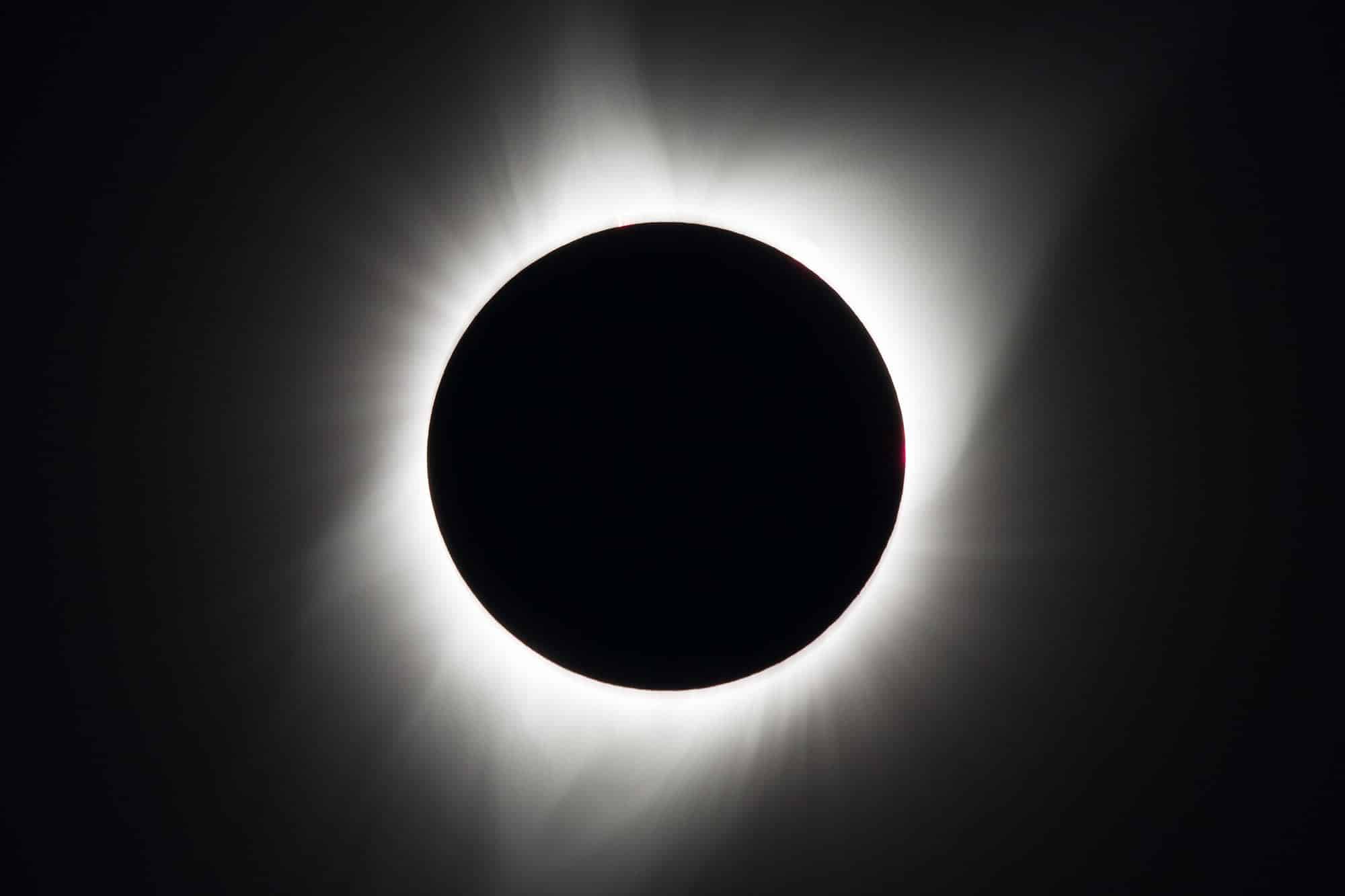On April 8, 2024, a spectacular event will captivate tens, if not hundreds, of millions across the continental United States: the ‘Great American Solar Eclipse.’ A total eclipse, the event will create a unique and unforgettable experience for all who witness it. As we stand one year from the 2024 solar eclipse, we’ve started this blog dedicated to providing updates, insights, and tips to ensure you’re well-prepared for the big day.
What makes the 2024 eclipse so notable is its path, which takes it directly over the most heavily populated areas of the central and eastern United States. Several major cities are within the ‘path of totality,’ and nearly two-thirds of the country will see more than half of the sun covered at some point. At TWSE headquarters, around 3:22 pm EDT, the sun will be just over 92% covered (you better believe we’ll have a live webcam for this one! :)).

What’s pretty crazy is that this isn’t the first time the US has been treated to what some astronomers have dubbed the Great American Solar Eclipse. If you think we’ve just been through this, you’re right — in 2017. The total solar eclipse of August 21, 2017, captivated millions as it traversed the continental United States from the Pacific coast in Oregon to the Atlantic coast in South Carolina.
Major cities that fell within the path of totality for the 2017 solar eclipse included Salem, Oregon; Idaho Falls, Idaho; Casper, Wyoming; Lincoln, Nebraska; Kansas City, Missouri; Nashville, Tennessee; and Columbia, South Carolina. Like the upcoming 2024 solar eclipse, the 2017 event offered millions nationwide a unique and awe-inspiring experience.
In addition to the 2017 and 2024 solar eclipses, the United States will experience an annular solar eclipse on October 14, 2023. An annular eclipse occurs when the moon is too far from Earth to completely cover the sun, leaving a “ring of fire” visible. This eclipse was visible in parts of the western United States, including Reno, Nevada; Salt Lake City, Utah; and Albuquerque, New Mexico.
Remarkably, a small region in the United States was fortunate enough to experience totality or annularity from all three of these solar eclipses. Carbondale, Illinois, known as the “Eclipse Crossroads,” found itself in the path of totality for the 2017 eclipse and will do so again in 2024. It will even be able to see the 2023 annular eclipse, but it will only be a partial eclipse. This rare occurrence has drawn attention to Carbondale as a prime location for eclipse enthusiasts and astronomers.

What is a Solar Eclipse?
A solar eclipse occurs when the moon passes between the Earth and the sun, casting a shadow on the Earth’s surface. There are three solar eclipse types: partial, annular, and total. A partial eclipse happens when the moon covers only a part of the sun, while an annular eclipse occurs when the moon is too far from Earth to completely cover the sun, leaving a “ring of fire” visible. The 2024 eclipse is a total solar eclipse, meaning the moon will completely block the sun, momentarily turning day into night.
So why is a solar eclipse such a big deal? Solar eclipses have been marveled at for centuries, captivating scientists and the general public. They hold scientific significance as they provide opportunities to study the sun’s corona from the Earth’s surface since the brightest part of the sun is blocked out.
Culturally and historically, different societies have interpreted solar eclipses in various ways, often leading to fascinating myths and legends. However, the unique viewing experience of a total solar eclipse is what truly sets it apart. Observing the sun’s corona as it envelops the moon and experiencing the eerie twilight during totality is a once-in-a-lifetime opportunity.
Path of the Great American Solar Eclipse
The path of the 2024 solar eclipse will stretch from Mexico, across the United States, and into Eastern Canada. Some major cities within the path of totality include Mazatlán, Mexico; Austin and Dallas, Texas; Indianapolis, Indiana; Cleveland, Ohio; and Buffalo, New York. The duration of the eclipse will vary depending on your location. The longest duration is four minutes and 28.13 seconds near Nazas, Durango, and Torreón, Coahuila in Mexico. However, totality exceeding 4 minutes will occur well into the United States.
Below we’ve shared a video of the eclipse path, courtesy of NASA. The map they reference can be downloaded from here.
[embedyt] https://www.youtube.com/watch?v=38j4X6A4Ywg[/embedyt]With a year to go, now is the perfect time to start planning for the 2024 solar eclipse. Identify optimal viewing locations and make travel arrangements well in advance, as popular spots will likely fill up quickly. It’s also essential to prioritize safety when observing a solar eclipse. Proper eye protection, such as ISO-certified eclipse glasses, prevents potential eye damage.
If you’re looking for the best opportunity to view the April 8, 2024, solar eclipse, consider heading to the southwestern United States, where the chances of clear skies are generally higher in early April. Texas, in particular, offers a promising location, with cities like Austin and Dallas falling within the path of totality. While the weather can be unpredictable, historical data suggests that these areas have a higher likelihood of favorable conditions for eclipse viewing.
Throughout the year, we will provide regular updates and cover various topics related to the 2024 solar eclipse, including detailed information on the path of totality, recommended locations for viewing, community events, scientific research, and more. We encourage reader engagement and interaction, so feel free to share your thoughts, questions, and personal experiences in the comments section.


